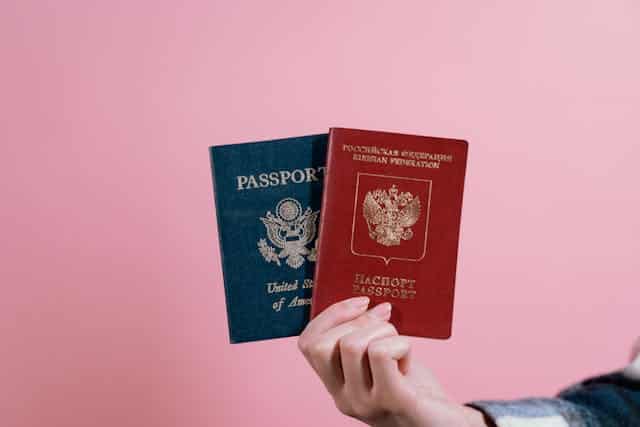When someone asks you to write something in English, you do not immediately think about the dialect or type of English you are supposed to write in. However, this is very important to the target audience. For example, when you write content for the Australian market, you need to ensure that the content is written in Australian English and not in American or British English.
The differences in pronunciation, vocabulary, spelling and grammar are addressed.
Introduction: A Brief History of English Language
Anglo-Saxon settlers introduced the first varieties of English to Britain in the fifth century. Following the Norman Conquest of England in 1066, the language was altered by French. The printing press was invented in the late 15th century, and the King James Bible was published, resulting in the development of Early Modern English. With the British Empire’s subsequent growth, English as we know it expanded around the globe.
In 1587, the British colonised North America, and two centuries later, they invaded Australia. Both of these countries have been diverging and sharing new words and phrases for over 250 years.
Thanks to lexicographer and language reformer Noah Webster, America began nailing down its english version in the 1800s. His ground breaking American Dictionary of the English Language intended to standardise the American language. He considered that English spelling standards were overly complicated, thus he invented pronunciation-as-written spellings. He also introduced 12,000 new terms, such as skunk and squash, that did not appear in British dictionaries.
The majority of the British settlers who came to Australia to settle came from Ireland or London. When Americans began to influence Australian English, the Australian accent shifted. Australian English is the most comparable to British English in terms of spelling and sentence structure. However, its accent and vocabulary are quite different. American spellings were prevalent in Australia in the late 19th and early 20th centuries. Australia also created its own vocabulary, offering the world new terms for the Aborigines’ flora and wildlife, such as kangaroo and dingo.
4 Main Differences between Australian, British and American English
1. Differences in Pronunciation and Accents
A notable difference between the three versions of English is the accent. The British accent is perceived as most attractive, and the American accent is ranked as easiest to understand. The differences between the accents are explainable by the previously described history of the three countries.
The bulk of early American settlers was from the working class, and at the time, these people had a natural tendency to pronounce the letter ‘R’ more forcefully than the social elite. As a result, the great mass of the American population spoke with a strong R, whilst those English speakers who remained in England began to imitate the elite’s habits, resulting in the formation of two different accents.
Australia was colonised two centuries later, which explains why the accent of Australian English is more similar to British English compared to American English. However, American English became very popular in Australia later in history, which affected their pronunciation.

The table presented above shows the most significant differences in pronunciation between British, Australian and American English.
The first row shows the difference between the pronunciation of the letter ”T”. In British and Australian English, the letter ”T” is pronounced as ”Tj” while it is pronounced as a ”T” solely in American English.
The second row presents the difference in pronunciation of the letter ”O” in some cases. In Australian and British English, this letter is pronounced as an ”O”; however, Americans pronounce the letter ”O” as an ”A”.
The third significant difference is again regarding the pronunciation of the letter ”T”. In British English, the letter ”T” (in most spoken dialects) is pronounced as a ”T” while this letter is pronounced as a ”D” in Australian and American English.
In the fourth row, the difference between the pronunciation of the letter ”R” is shown. In American English, this letter is pronounced as a hard ”R”. The sound the British and Australian people make for this letter ”R” is very different from the American pronunciation. While British and Australian English pronunciation is very similar to each other, there is a slight difference. They both pronounce it as ”ah”, though the sound the Australians make is slightly more open.
Another difference in the pronunciation of the letter ”O” is the hard ”O” Americans pronounce is words like no, overflow and GoPro, while the British and Australians make a completely different sound. Again, the British and Australians’ sounds are pretty similar, but there is a difference. This difference is most apparent with the word ”no”. The British say ”neuw”, they tend to end the world with a ”w” sound while the Austrians end the word with more of a ”h” sound. In other words, this difference is not always noticeable.
The last major difference is the pronunciation of ”er” at the end of a word. We have already seen that the British and Australians pronounce the letter ”R” as ”ah”. When pronouncing ”er” they tend to ignore the letter ”E” and ”er” as ”ah”. The Americans pronounce ”er” as ”ur”.
As you probably already noticed, the pronunciation in the Australian accent seems to be a mix of British and American English, while Australian English is more similar to British English.
2. Differences between Vocabulary and Word Spelling
There are significant differences in vocabulary between the three types of English. The table on the right shows some of the different words used to describe something. There are many more differences. However, most times, the various terms are well understood by the speakers of other versions of English.

Again, you see that some Australian words are similar to American or British words. But there are also words that differ completely from American and British English. If you want to know more on American and British english, the following article presents the main differences between American and British English.
Aussie Slang, the Informal Language
Slang is defined a very informal language with words used by a specific group of people. You will hear slang mostly in spoken language, messages, and social media. Using these terms properly will make you sound more like a native, although more informal:
Australian English is known for having many slang words that foreigners barely understand. Some of the most used slang words in Australian English are presented in the table below.
You might notice that many of these words are abbreviations. According to Australians, they like to abbreviate everything that can be shortened.
3. Differences in Word Spelling and Spelling Rules
The next significant difference between British, Australian and American English is the spelling. The Australians uses the same spelling rules as British English. In the table on the right, some examples are presented. The differences are clear, better to see them compared like this:

4. Differences in Grammar and Semantic Rules

The least noticeable difference between the three different versions of English is probably the grammar. The table below shows some small examples, like collective nouns or past tenses.
Another difference is the usage of the Present Perfect tense (for example, I have eaten dinner already). In Australian and British English, this is far more prevalent. People in the United States will use the past simple more frequently, as in “I already ate dinner.”
Conclusion
This article was focused on the differences, but you should remember that there are many more similarities between American, Australian and British English than differences. We have noticed that Australian English is more similar to British English than American English when looking at pronunciation, spelling, and grammar. But Australian English has many resemblances with American English as well.
To conclude, due to the later colonisation of Australia by the British, Australian English is more similar to British English than American English. Later the American accent became popular in Australia, affecting their language, which resulted in Australian English looking like a mix of British and American English. However, this is not entirely the case. Australian English has many authentical words and a slightly different pronunciation of words.




